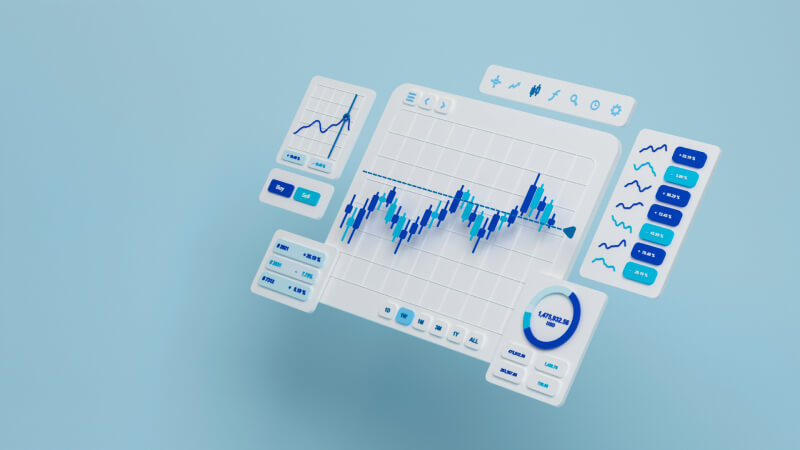The 2% rule in trading is an investing strategy in which you can never invest more than two percent of your available account balance (also known as capital at risk or CaR) on any given trade. You must determine the two percent of your equity or capital at risk to execute the 2% trading rule.
For instance, if your bankroll balance is $60,000, you must not risk more than $1,200 (2% of $60,000) on any single trade.
You can then calculate the maximum risk allowed by dividing the stop-loss ($1,200) and the number of shares or forex pairs you wish to purchase in a single trade and make consistent profits. In this case, the maximum permissible risk is $1,200 or 2%, making it a great trading strategy for inexperienced traders at the stock market.
Can you trade 7 days a week?
No, you cannot trade seven days a week. Most markets are closed for trading on weekends. You can use this opportunity to analyze and study the market from position trading and swing trading point of view to discover more opportunities once the markets open again. The benefits of weekend trading are many and impressive, including the ability to analyze the forex market and price movements from the comfort of your own home.

What is the 1% rule in trading?
The 1% rule in trading is an investment strategy in which the trader must not invest more than 1% of the capital at risk in any given trade. The rule limits the amount you put into any single trade to no more than 1% of your total trading account balance. You can risk 1% of your bankroll balance by trading either short positions with stop-losses further away from the entry price or large positions with narrow stop-losses.
The 1% rule is a restriction that traders incorporate into their investment activities to ensure they stay within their set risk management limits.
For instance, a trader who has a $50,000 trading account balance and uses the 1% rule should risk no more than $5,000 – or 1% of the trading account – on any trade. With this knowledge of the amount that can be risked, the trader can use the figure to calculate the total of shares, forex pairs, commodities, etc., they can buy. You can also use the rule to reduce the downside risk with the 1% trading rule.
The target profits on trades made with the 1% rule in mind should be a minimum of 1.5-2% of the initial trading account balance. The 1% rule is just a generic guide, as some traders can invest slightly over 1% while high-capital investors may consider risking less than a percent of their account balance.
The advantages of using the 1% rule in trading are pretty obvious. Sticking to the 1% rule in trading helps minimize your capital losses when experiencing a losing streak or an off-day.
Why You Should Stick to the 1% Rule as a Day Trader
Overview of 1% Rule for Risk Management
Day trading is a fast-paced trading method that necessitates discipline, expertise, and excellent risk management abilities.
Even the finest day traders in the world cannot control the market’s direction. If you ask any experienced day trader if their next deal will be a winner or a loser, they’ll most likely claim they don’t know.

The only thing traders have control over is their risk. The 1% rule is all about managing risk well in order to prevent unpleasant losses and continue in the game in the long haul.
Professional day traders follow a risk-management of 1% risk rule, which they tweak somewhat to meet their trading strategies. Adherence to the rule limits capital losses when a trader has a bad day or encounters difficult market circumstances, while yet allowing for high monthly returns or income.
The 1% risk rule makes sense for a variety of reasons, and you may profit from understanding it and incorporating it into your trading approach.
Defining the 1% Day Trading Risk Rule
What’s the 1% rule? It refers to the maximum amount of risk you may take on in a single deal. Traders who have previously studied risk management will recognize this term as risk-per-trade. The one-percent rule states that you can only risk up to 1% of your trading account every deal.
The rule states that you should never risk more than 1% of your account worth on a single deal. That doesn’t imply that if you have a $30,000 trading account, you may only buy $300 in stock, or 1% of $30,000. You may put all of your money into a single transaction, or even more if you employ leverage. Implementing the 1% risk rule entails using risk management measures to avoid losses of more than 1% on any single deal.
Nobody wins every deal, and the 1% risk rule helps keep a trader’s money from plummeting dramatically in negative circumstances.
If you risk 1% of your current account balance on each trade, it would take 100 consecutive losses to wipe out your account.
Many more inexperienced traders would complete their first trading year successfully if they followed the 1% rule. Risking 1% or less every transaction may appear to some to be a modest amount, yet it can still yield excellent rewards. If you risk 1%, your profit target or expectation on each successful trade should be 1.5% to 2% or more.
Even if you only win half of your transactions, obtaining a few percentage points on your account each day is perfectly doable when making numerous deals every day.
How to Apply the 1% Rule to Day Trading
You can make a 2% return on your account by risking 1% of your account on a single trade, even if the market only moved a fraction of a percent. Similarly, you can risk 1% of your account even if the price moves by 5% or 0.5% on average.
You may accomplish this by employing target and stop-loss orders. The rule may be used to day trading equities or other markets such as futures or currency. Assume you have a $30,000 account and wish to buy a stock for $15. When you look at the chart, you can see that the price has recently reached a short-term swing bottom of $14.90.

You put a stop-loss order at $14.89, which is one penny less than the most recent low price. Once you’ve determined where you want your stop-loss, you can figure out how many shares to buy while risking no more than 1% of your account. Your account risk is equal to one percent of $30,000, or $300.
The difference between your stock buy price and stop-loss price equals $0.11, which is your transaction risk. To determine the appropriate position size, divide your account risk by your trade risk: $300 divided by $0.11 equals 2,727 shares. Round this down to 2,700 to see how many shares you can buy in this transaction without risking losing more than 1% of your account.
It’s worth noting that 2,700 shares at $15 each cost $40,500, which is more than your $30,000 account balance. As a result, you’ll need at least 2:1 leverage to execute this trade. If the stock price falls below your stop-loss level, you will lose around 1% of your money, or approximately $300 in this scenario.
However, if the price rises and you sell your shares at $15.22, you would earn about 2% on your investment, or nearly $600.
This is due to the fact that your position is set to make or lose about 1% for every $0.11 the price fluctuates. Even though the price only increased approximately 2%, if you leave at $15.33, you earn over 3% on the deal.
This strategy allows you to adjust transactions to any market environment, turbulent or calm, and still generate money. The strategy also works in all markets. Before trading, you should be aware of slippage, which occurs when you are unable to exit at the stop-loss price and may incur a larger loss than anticipated.
Stop Losses
Stop-loss orders are orders that automatically cancel an open transaction when the price reaches a certain threshold. Stop-losses are used in trading to reduce losses and are a crucial aspect of the 1% rule. Don’t adjust your stop-loss to get a risk-per-trade of 1%!

Stop-losses should be set based on your analysis, not the amount of money you are willing to risk. Position sizing, not stop-losses, is employed to keep inside the 1% limit. Here are 4 types of stop-losses that can be minimized by using the 1% rule:
Types of Stop-Losses
Percentage stop loss
Proportion stops are calculated as a percentage of your trading account balance. For example, if a trader wishes to risk 1% of his or her account on a transaction, he might set a percentage stop at such a level that his total loss does not exceed 1% if the stop-loss is activated.
It is important to note that this is not the proper approach to use risk-per-trade. In the above example, our trader is following the 1% rule by employing the stop-loss order rather than the position size.
Volatility stop-loss
Volatility stops are another common sort of stop-loss. Volatility stops are dependent on the underlying instrument’s volatility.
The ATR is a common indicator for use with volatility stops. A trader, for example, may set a stop-loss 1.5 or 2 times higher than the ATR.
Time stop loss
Time stops, as the name implies, are stop-loss orders that are dependent on the passage of time. To eliminate overnight risk or holding transactions over the weekend, time stops are typically paired with other forms of stop-loss orders.
Chart stop loss
Lastly, chart stops are stop-loss orders based on key technical levels. Chart stops, in my experience, produce the best outcomes of any stop-loss kind. Chart stops can be put above or below major resistance and support levels, above or below trend lines, at Fibonacci levels, Pivot Points, or any other technical tool.
